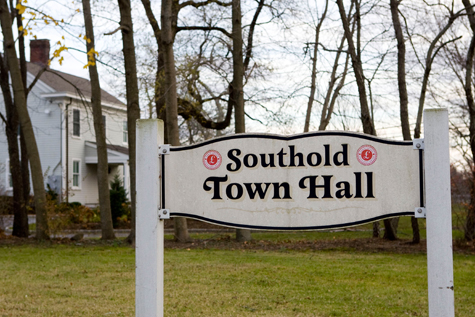Editorial: New variance regulation makes sense
 It’s Sept. 12, 1957, and a Mattituck resident is appearing before the newly created Southold Town Zoning Board of Appeals. He wants to add an enclosed porch to his home on Bray Avenue. His is the 22nd appeal ever filed with the ZBA, which was established April 9, 1957, and approved its first variance that June.
It’s Sept. 12, 1957, and a Mattituck resident is appearing before the newly created Southold Town Zoning Board of Appeals. He wants to add an enclosed porch to his home on Bray Avenue. His is the 22nd appeal ever filed with the ZBA, which was established April 9, 1957, and approved its first variance that June.
The building department had denied the Mattituck man’s application to build the porch, records show, because the alteration would have extended beyond his property’s building line.
So the man applied for the variance. He said it was in the spirit of the law and that the porch wouldn’t change the character of the district because there were “mostly summer dwellings on this street.”
The variance was approved.
Fifty-seven years later, the man’s home appears to have been replaced by a newer, larger house — and the portion of the town’s zoning ordinance that pertains to variance powers has just been amended for the first time. The amendment, approved Tuesday night, dictates that any project requiring a variance must be completed within three years or else the homeowner will need to seek an extension.
The measure was approved 5-1 Tuesday with only board member Jim Dinizio, a former ZBA chairman, voting against it. His argument, which he strongly voiced at a Town Board work session Tuesday morning, is that government should not get a “second bite at the apple.” If a variance is approved, it should remain in perpetuity, he said.
We disagree.
More from our opinion section:
• Featured Letter: The benefit of the doubt
• Suffolk Closeup: Twomey was never, ever giving up
• Guest Spot: How deer have decimated our woodlands
The amendment is certainly within the spirit of what the town set out to do when it formed the East End’s first ZBA in 1957. As quoted from the April 12, 1957, issue of The Suffolk Times: “The sole purpose of zoning and planning is not to work a hardship on any individual, but to ensure residents of the Town of Southold that their homes and businesses will be protected against undesirable ventures.” The very section of the zoning ordinance amended Tuesday states that it exists, in part, to protect public welfare.
We recognize that it’s a reach to say the addition of an enclosed porch would be an undesirable venture today. But we couldn’t help but notice that the man’s argument in 1957 about why the variance wouldn’t change the character of the district would no longer be accurate. While Bray Avenue, like many other streets in Southold Town, was once filled mostly with summer homes, that’s not exactly the case today.
Communities change. Houses change. People change. Why should a variance be the one thing to remain constant?



